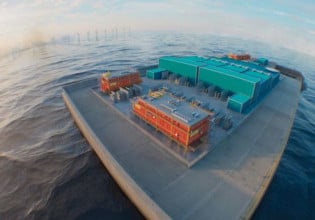The U.S. Army tested its base camp power and energy technologies during a demonstration on Fort Leonard Wood, Missouri. The Communications-Electronics Research, Development and Engineering Center, also known as CERDEC, assembled, monitored, managed and demonstrated its Energy Informed Operations, or EIO, microgrid. The EIO system was designed with an open architecture to allow power resources to easily plug in and play into the grid.
"Increased capabilities, for the Soldier, have caused energy demands on the battlefield to increase," said Marnie Bailey, CERDEC Command, Power and Integration Directorate, or CP&I, EIO team lead. "Energy Informed Operations aims to provide the Soldier the ability to interactively monitor and manage power systems in order to optimize power availability, allowing the unit to maintain mission critical systems needed to achieve mission success."
The EIO microgrid was demonstrated as part of the Sustainability Logistics Basing - Science Technology Objective Demonstration, or SLB STO-D, hosted by the U.S. Army Natick Soldier Research, Development and Engineering Center and the U.S. Army Maneuver Support Center of Excellence. The SLB STO-D team presented nine integrated technology and non-materiel solution sets in a collaborative effort to reduce fuel resupply by 25 percent, reduce water resupply by 75 percent, and decrease waste generation for back haul by 50 percent while maintaining current quality of life. The objective is to do this at 50 to 1,000 personnel expeditionary base camps.
"This demonstration and assessment of new base camp technologies are very important for the Army and the joint warfighter. These nine technologies are critical to the objectives of reducing the fuel, water and waste water removal requirements of expeditionary base camps, which will reduce the need for re-supply and reduce the risk to our warfighters conducting re-supply operations," said Maj. Gen. John F. Wharton, U.S. Army Research, Development and Engineering Command commanding general.
The EIO team's microgrid supported 24-hour operations for Soldiers housed in the Barracks Hut during the night and in field exercises during the day.
"A battlefield environment, based on energy informed operations, will enable our forces to be more agile, more efficient and more able to rapidly adapt to any mission conditions. This will result in increases in lethality, survivability and mission effectiveness," Bailey said. "CP&I is strategically postured to add value in the power management space for the Army as its core competencies of power, mission command and integration provide the personnel and skill sets needed to attack problems where those capabilities merge."
The EIO microgrid responded and adapted to changes in power demands created because of the operational activities during the demonstration. "During early morning activities, there were instances where power demand reached 90 percent of a generator's capacity," said Garret Clarke, CERDEC CP&I engineer. "To compensate for the demand, the microgrid turned on a second generator and shared the loads between two generators."






